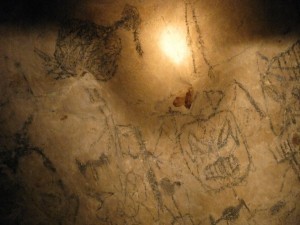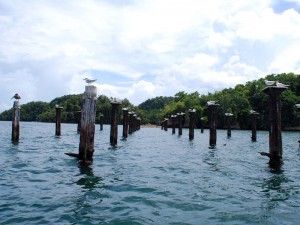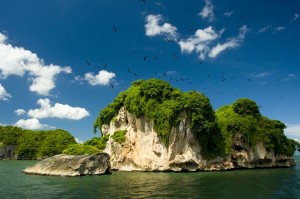Punta Cana is know for it’s gorgeous white sand beaches, but what you should know is the Dominican Republic is not just sun and sand. A short distance from Punta Cana there is another magical place, filled with mangroves, rare endangered species and channels of underground caves. The Los Haitises National Park is a national treasure, and and not so little secret.
So now that we’ve got your attention, here are three things you should know about this place:
-
The Lungs of the Dominican Republic
The Los Haitises National park is one of the largest and most important nature preserves in the Dominican Republic, and maybe in the entire Antilles. The park was created in 1976 and although the bounds have been redrawn on several different occasions, it is estimated to be around 615 square miles. In addition to being the home of a great variety of flora and Fauna, the park is home to numerous rivers that supply water to Santo Domingo and the Monte Plata area, earning the title of the ecological lung of the Dominican Republic. Caves of Los Haitises
Caves of Los Haitises
-
Home to the Taino Indians
The name of the park Los Haitises (Pronounced high-tee-sis) comes from the world haitis,which means highland or mountain range in the native Taino language. Way before the area became a national park, and before Columbus sailed the ocean blue, this area was home to the Taino Indians. The Taino Indians were some of the first inhabitants of the island, before they were practically eliminated with the arrival of the Spanish. Los Haitises Birds
Los Haitises Birds
The Tainos used the park’s extensive underground cave channels as their homes, literally leaving their mark with interesting pictoglyphs. There is also artwork that has that is still unidentified and thought to predate the Taino Indians; these Taino artifacts are of great historical and cultural importance to the Dominican Republic.
-
Most diverse flora and fauna in the DR
Seabird island, Los Haitises National Park, Dominican RepublicThe park contains the greatest representation of fauna among all of the protected parks in the Dominican Republic. This rich biodiversity includes over 50 different specimens of mangrove trees, but the most popular are the red, white, and black mangroves. In fact the park contains the largest extension of mangrove trees in the Caribbean. Los Haitises Park
Los Haitises Park
The is also home to some incredible wildlife, all 20 bird species endemic to the Dominican Republic live here, including species that are not found anywhere else in the country. There are also 3 different endangered species who call the park their home. The only known nesting sites of the endangered Ridgeway Hawk. The only remaining land mammals native to the island, both war on the brink of extinction, the Hispaniolan Hutia and Solenodon.
So you can see, Los Haitises is pretty awesome, and due to this general awesomeness and the Park’s cultural, and ecological importance it has been named a UNESCO World Heritage Site. The park is open to the visitors, but only way to see it is through an organized tour. A tour of the park is a great way to If your are in Punta Cana on vacation, don’t miss a great opportunity to see another side of this beautiful island.